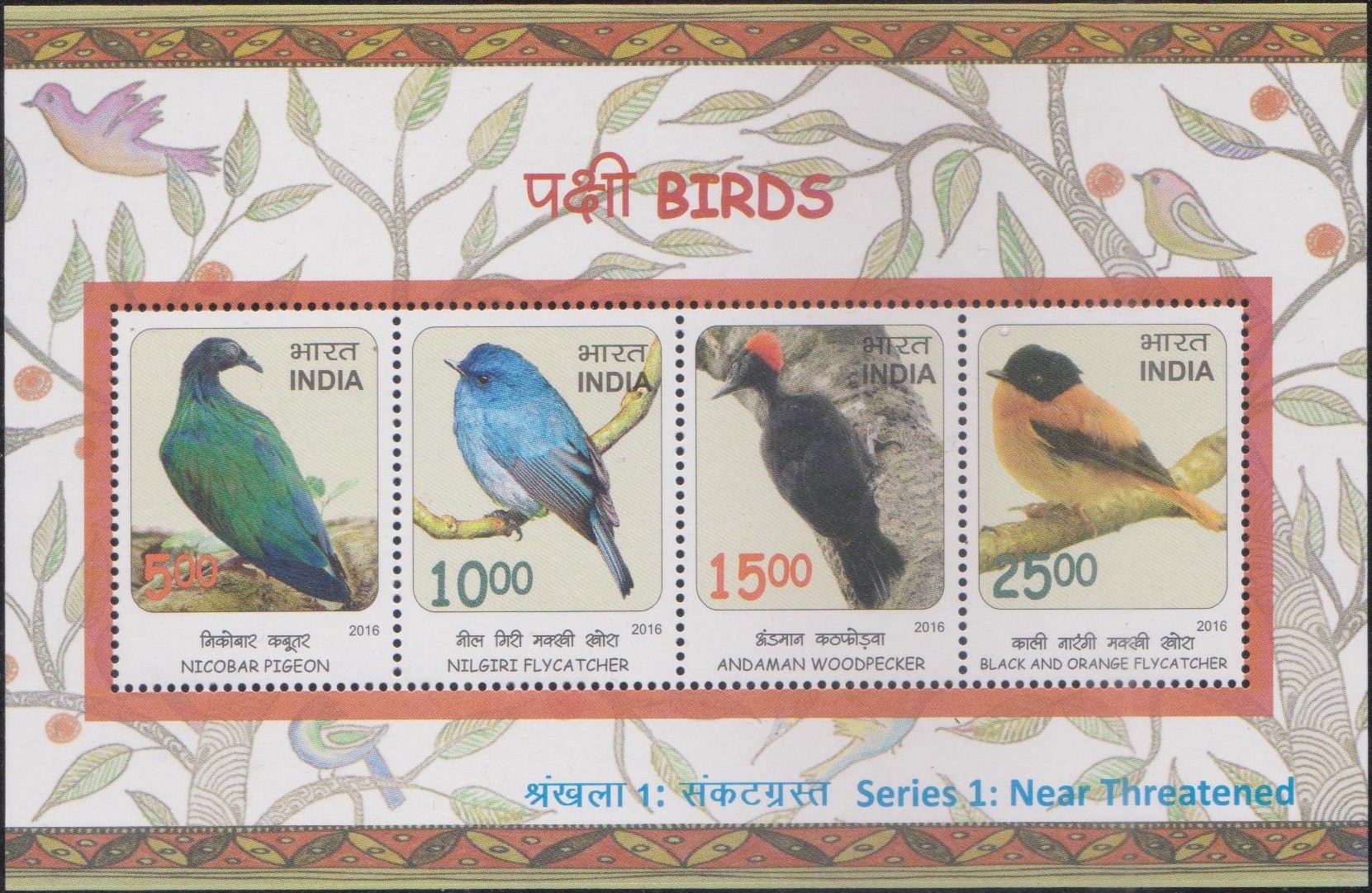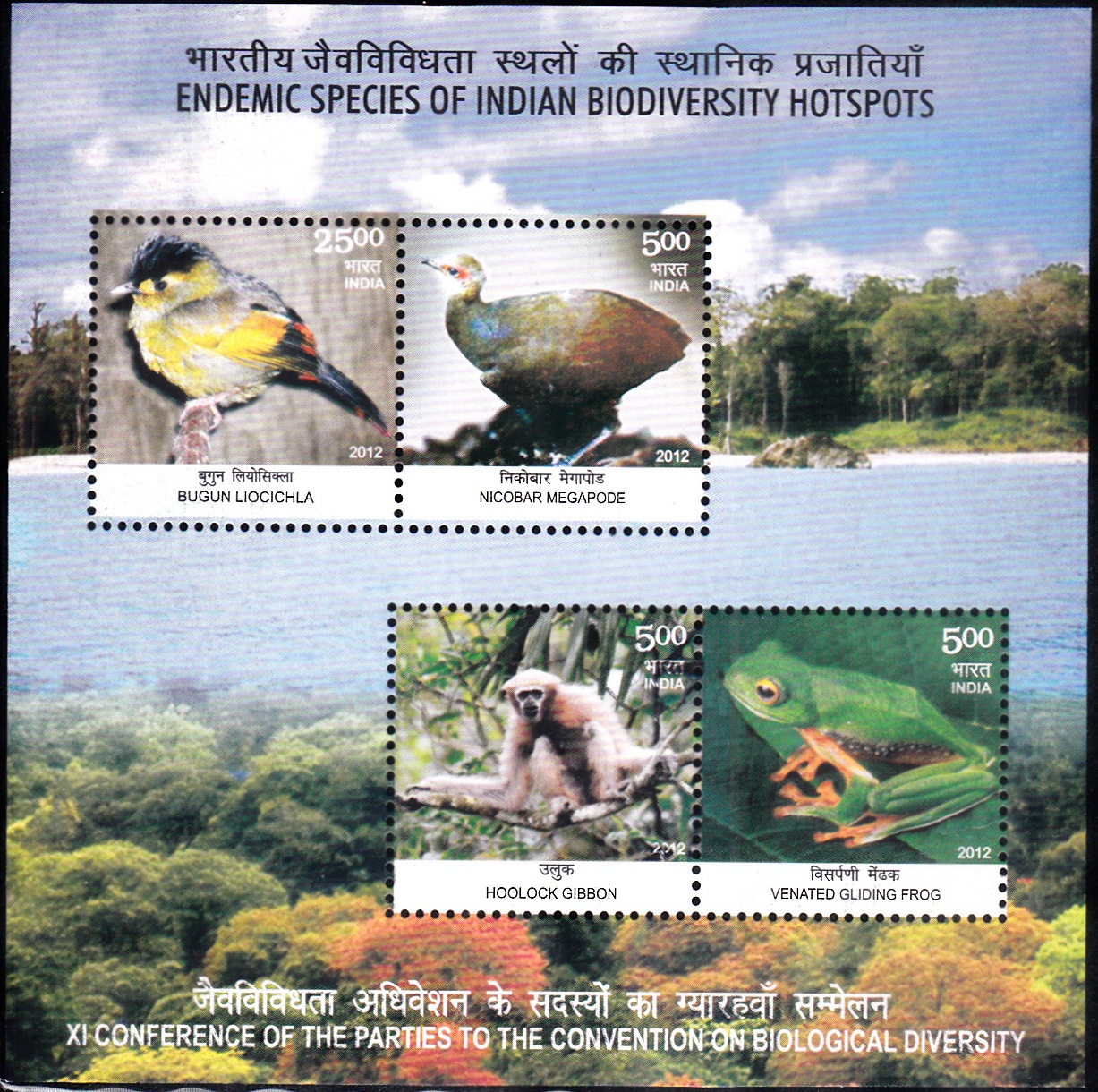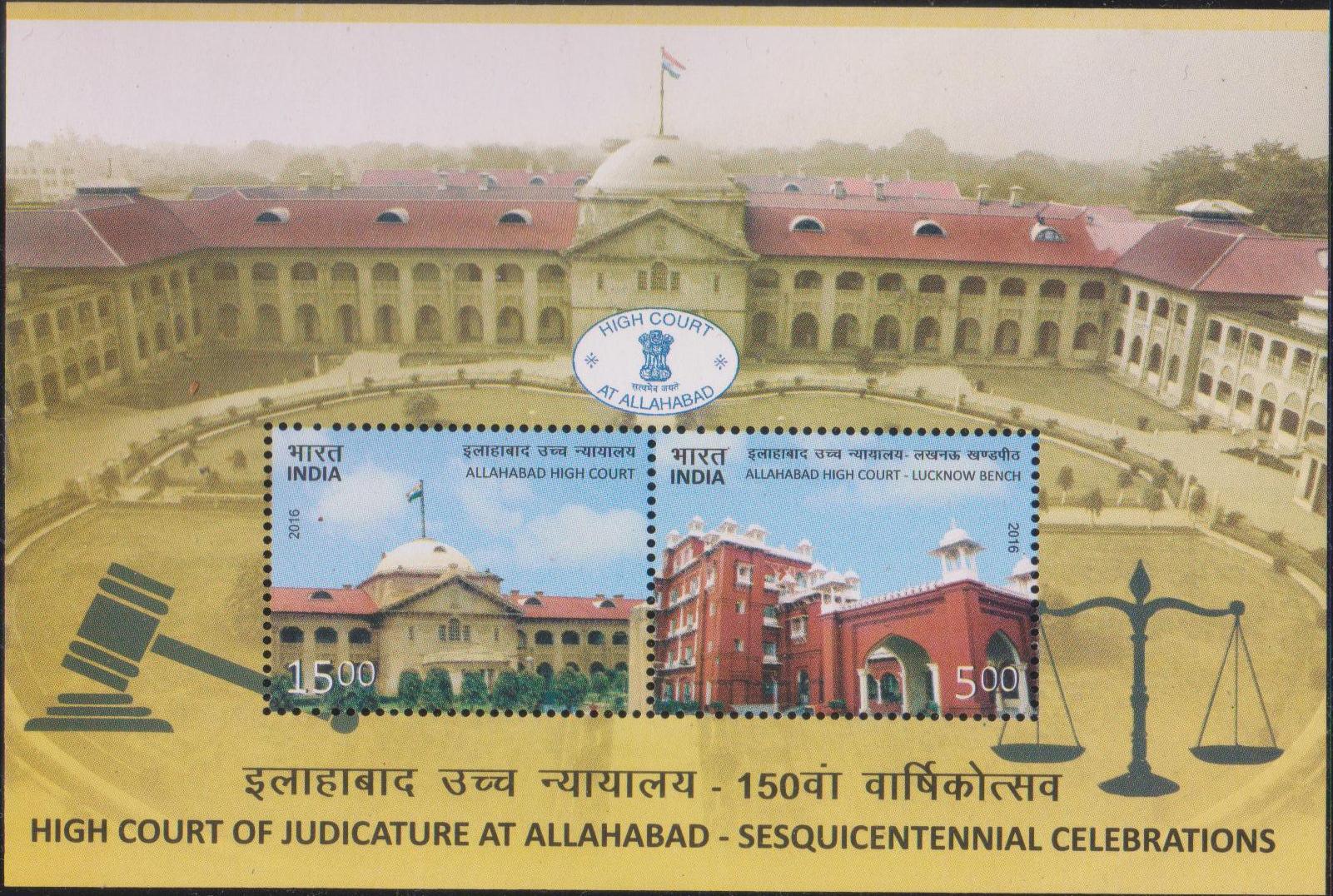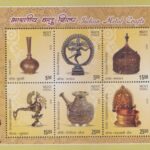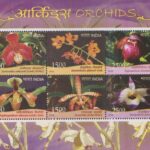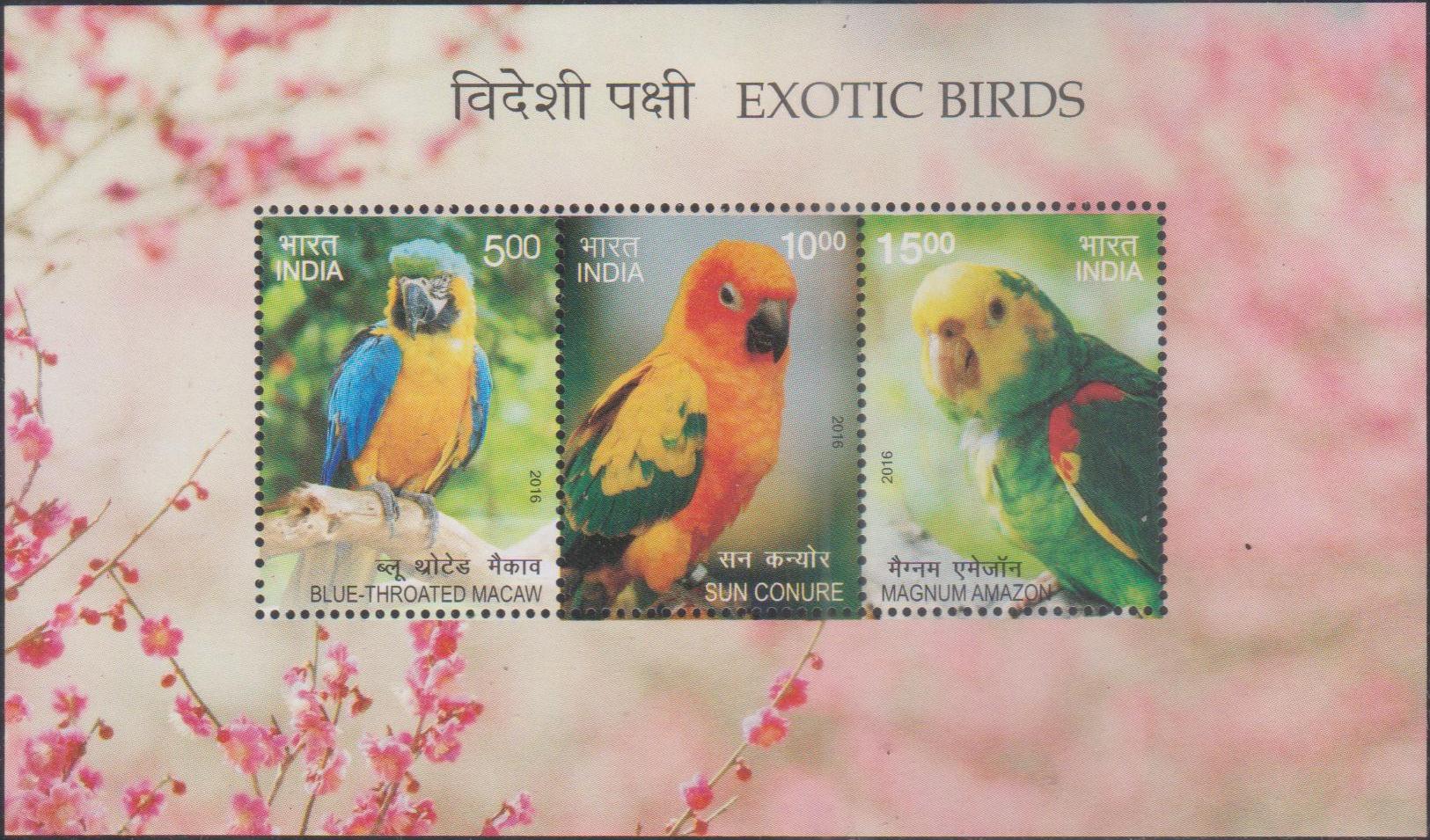
Exotic Birds of India 2016
2 Miniature Sheets consisting of 6 nos. of commemorative postage stamp on the Exotic Birds : Blue–throated macaw, Cape parrot, Hyacinth macaw, Lesser sulphur–crested cockatoo, Sun conure and Yellow–headed amazon :
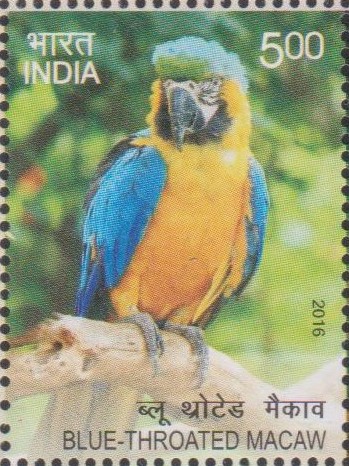
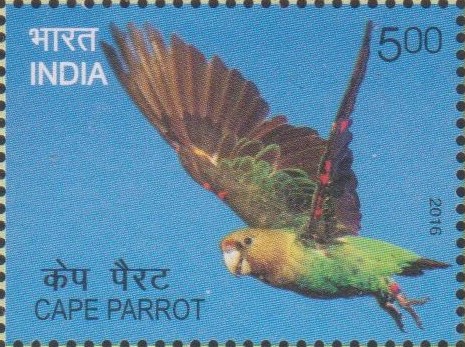
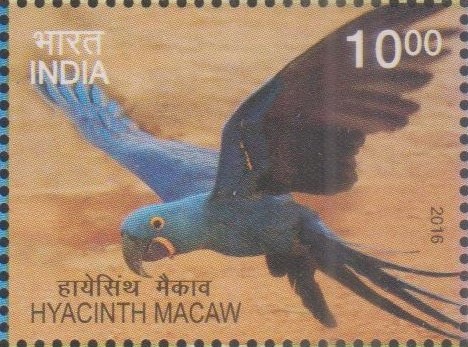
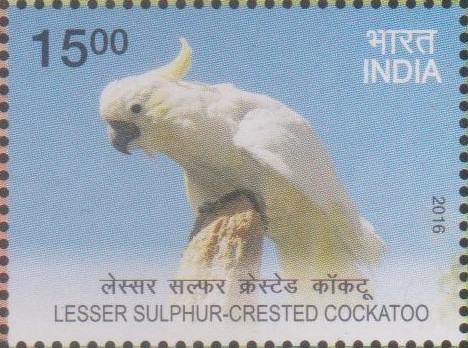
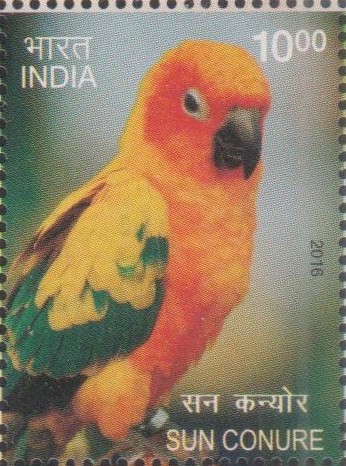
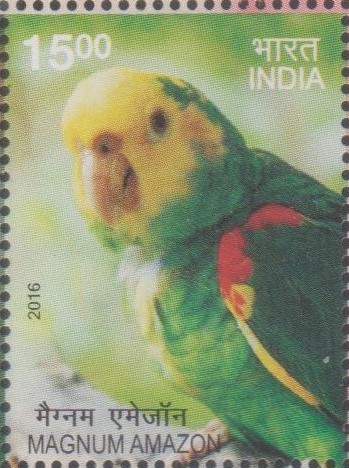

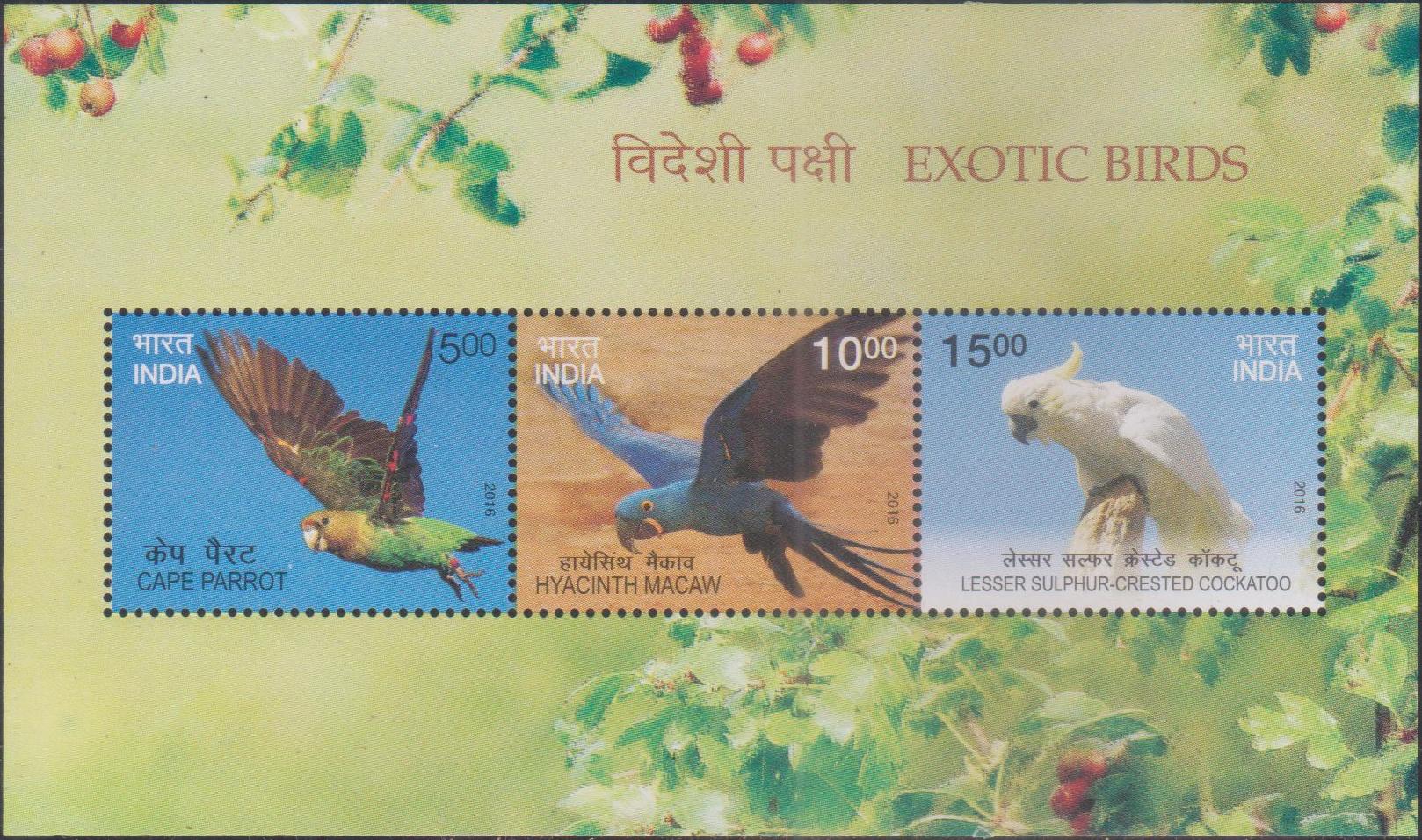 Issued by India
Issued by India
Issued on Dec 5, 2016
Credits :
Stamp / Miniature Sheet / Sheetlet / FDC / Brochure / Cancellation Cachet : Smt. Alka Sharma
Type : Miniature Sheets, Mint Condition
Colour : Multi Colour
Denomination : 500 Paise (2), 1000 Paise (2), 1500 Paise (2)
Stamps Printed : 0.2 million each
Miniature Sheet Printed : 0.1 million each (two types)
Sheetlets Printed : 30000 each (two types)
Printing Process : Wet Offset
Printer : Security Printing Press, Hyderabad
About :
- One of the most popular birds, parrots are loved and adored by the young and the old alike. Extensively appearing in popular folk and other literary traditions, parrots are a favorite among poets, bards and singers and even in painting, they have an association with portrayal of beauty and romance. Parrots are also widely illustrated in folk arts such as Madhubani Paintings.
- The parrots are a broad order of more than 350 birds. Macaws, Amazons, lorikeets, lovebirds, cockatoos and many others, are all considered parrots. Though there is great diversity among these birds, there are similarities as well. All parrots have curved beaks and all are zygodactyls, meaning they have four toes on each foot, two pointing forward and two projecting backward. Most parrots eat fruit, flowers, buds, nuts, seeds, and some small creatures such as insects. Parrots are found in warm climates all over most of the world. The greatest diversities exist in Australasia, Central America, and South America.
- Many parrots are kept as pets, especially macaws, Amazon parrots, cockatiels, parakeets, and cockatoos. These birds have been popular companions throughout history because they are considered to be intelligent, charismatic, colourful, and musical. Some birds are said to imitate many non-avian sounds, including human speech.
- The Department of Posts is pleased to release a set of six stamps on the following six exotic birds.
- (i) Blue-throated Macaw / Ara glaucogularis
- The Blue-throated Macaw also known as Caninde Macaw is a species endemic to a small area of north-central Bolivia, known as Los Llanos de Moxos. Blue-throated Macaw lives in the savanna forest and is one of the rarest parrot in the world.
- Recent population survey for this species estimates that about 350-400 individuals remain in the wild. It is listed on the The International Union for Conservation of Nature and Natural Resources (IUCN) Red List as Critically Endangered. It is also listed in Convention on International Trade in Endangered Species (CITES), an international treaty that controls international trade.
- Blue-throated Macaw have largely bright yellow underparts with pale blue vent. Upperparts are turquoise-blue, slightly duller on crown and brighter on rump. They have bare facial patch obscured by blue feather-lines merging into blue lower cheek and throat, separated from crown by narrow yellow stripe and bare pink skin around base of the large, black bill. On the face there is a sparsely feathered patch of skin near the base of the large dark-colored bill that has five or six horizontal stripes of blue feathers which are unique for every Blue-throated Macaw and can be used to individually identify adults.
- This species can be differentiated from the slightly larger Blue and Yellow Macaw by their blue throat – the blue Crown and the lack of contrast between the remiges and upperwing coverts. The origin of this bird is in Bolivia.
- (ii) Cape Parrot / Poicephalus robustus
- The Cape Parrot also known as Levaillant’s Parrot is a large, temperate forest dwelling parrot endemic to South Africa. It is a short-tailed moderately large bird with a very large beak used to crack all sorts of hard nuts and fruit kernels.
- So far there is no uniform view on the classification of this species due to the existence of their geographical separated but closely related forms that differ in habitat, size & plumage. Dominant view of ornithological community considers these as two species, with the temperate forest dwelling Cape Parrot distinct from Savanna species where they include brown necked Parrot of West Africa and grey headed Parrot of Eastern & Southern Africa. But the Birdlife International taxonomic checklist of the world’s birds considers all three forms as subspecies of a single species Poicephalus robustus.
- The Cape Parrot only occurs in South Africa & is closely associated with yellowwood forests. The Yellowwood trees are important to them for breeding, feeding and social interaction. The species is a secondary cavity nests, preferring tall dead yellowwood as nesting sites.
- While the ultimate threat to this species is habitat loss through the degradation and reduction in Afromontane Southern Mistbelt Forest, the more recent but significant threats are (i) infection and mortality caused by Psittacine beak and feather disease (PBFD) and (ii) local poaching and trade.
- (iii) Hyacinth Macaw / Anodorhynchus hyacinthinus
- Hyacinth Macaw or Hyacinthine Macaw, is a parrot native to central and eastern South America. With a length of about 100 cm it is longer than any other species of parrot. It is the largest macaw and the largest flying parrot species. Also known as ‘Gentle giants’ Hyacinths are considered to be very affectionate birds by nature. Its feathers are entirely blue, lighter above with a long and pointed tail. This species can be confused with the far rarer and smaller Lear’s Macaw.
- Hyacinth Macaw prefers palm swamps, woodlands, and other semi-open, wooded habitats. It usually avoids dense, humid forest, and is generally restricted to the edge or relatively open forests. In different areas of their range, these parrots are found in savannah grasslands, in dry thorn forest known as caatinga, and in palm strands. They are seen flying in pairs, and feed on the hard nuts of several palm nuts. These nuts, which are so hard and difficult to break, are easily crushed by their powerful beak. Nesting takes place between July and December, nests are constructed in tree cavities or cliff faces depending on the habitat.
- Habitat loss and trapping of wild birds for the pet trade has taken a heavy toll on their wild population. The unique personality and beauty of this species has made it one of the most sought after – and also one of the most abused – of all parrots.
- To provide full protection, it is classified as Vulnerable on the International Union for Conservation of Nature’s Red List (IUCN) and its global trade is controlled by listed it on Appendix I of the CITES (Convention on International Trade in Endangered Species of Wild Fauna and Flora).
- (iv) Lesser Sulphur-crested Cockatoo / Cacatua sulphurea sulphurea
- Lesser Sulphur-crested Cockatoo is also known as the Yellow-crested Cockatoo. The Lesser Sulphur-crested is found in wooded and cultivated areas of East Timor and Indonesia’s islands of Sulawesi and the Lesser Sundas.
- The Lesser Sulphur-crested Cockatoo is a critically endangered species. Numbers have declined dramatically due to illegal trapping for the cage-bird trade. They are listed on Appendix I on CITES.
- It is a medium-sized cockatoo with white plumage, bluish-white bare orbital skin, grey feet, a black bill, and a retractile yellow or orange crest. The Lesser Sulphur-crested Cockatoo nests in tree cavities. Their wild population is declining due to habitat destruction and trade.
- There are 6 subspecies of the Lesser Sulphur-Crested Cockatoo. The most well known subspecies is a Citron crested Cockatoo. This subspecies has an orange colored crest, instead of a yellow one. It is found only on the Islands of Sumba. Other species are found on Islands of Indonesia.
- Lesser Sulphur-crested Cockatoo can also be easily confused with the larger and more common found Sulphur-crested cockatoo, which has a more easterly distribution and can be distinguished by the size and presence of large yellow ear patch in the Lesser Sulphur-Crested Cockatoo.
- (v) Sun Conure / Aratinga solstitialis
- Sun Conure, also known as Sun Parakeet, is a medium-sized brightly colored parrot native to northeastern South America. The adult male and female are similar in appearance, with predominantly golden-yellow plumage and orange-flushed underparts and face. Sun Conures are very social birds, typically living in flocks. They form monogamous pairs and nest in palm tree cavities. This species is currently threatened by loss of habitat and trapping for the pet trade and listed as endangered by the IUCN. Sun Conures are popular as pets because of their bright coloration and curious nature. They are commonly bred in aviculture and may live up to 30 years.
- Sun Conures are mostly found in tropical habitats occurring within dry savanna woodlands and coastal forests in altitudes less than 1200 meters, on edge of humid forests growing in foothills. Like other members of the genus Aratinga, the Sun Conure is very social and typically occurs in large flocks of 20 to 30 individuals.
- Sun Conures have a rich yellow crown, nape, lesser wing-coverts, tips of the greater wing-coverts, chest, and underwing-coverts. The face and belly are orange with red around the ears. The base of the greater wing-coverts, tertials, and base of the primaries are green, while the secondaries, tips of the primaries, and most of the primary coverts are dark blue. The tail is olive-green with a blue tip. From below, all the flight feathers are dark greyish. The bill is black. Juvenile sun parakeets display a predominantly green plumage and resemble similar-aged sulphur-breasted parakeets. The distinctive yellow, orange, and reddish colouration on the back, abdomen, and head is attained with maturity.
- (vi) Yellow-headed Amazon / Amazona oratrix
- The Yellow-headed Amazon is an endangered parrot of Mexico and northern Central America. It prefers to live in mangrove forests or riparian forests near rivers or other water bodies.
- This species is framed for its ability to mimic, both in speech and even ‘song’ making it an excellent talker. For centuries they have been revered as highly desirable pets worldwide.
- The popularity of these parrots as a pet continues to fuel trade and trapping of wild birds which have nearly driven this species to extinction in the wild. It is reported that their wild population has declined from 70,000 to 7,000 in the past two decades alone.
- The Yellow-headed Amazon is a stocky short-tailed green parrot with a yellow head. The immature birds attain full adult head colour in 5 or more years. As in other Amazon parrots, this parrot has rounded wings, and a square tail with a robust build body. The body is bright green, with yellow on the head, red at the bend of the wing, and yellow thighs. The flight feathers are blackish to bluish violet with a red patch on the outer secondaries. The base of the tail also has a red patch, which is usually hidden. The outer tail feathers have yellowish tips. The yellow headed Amazon is considered as endangered by IUCN & is on the CITES Appendix I.
- (i) Blue-throated Macaw / Ara glaucogularis
- Text : Based on material received from Bombay Natural History Society.
Subscribe
Login
0 Comments


